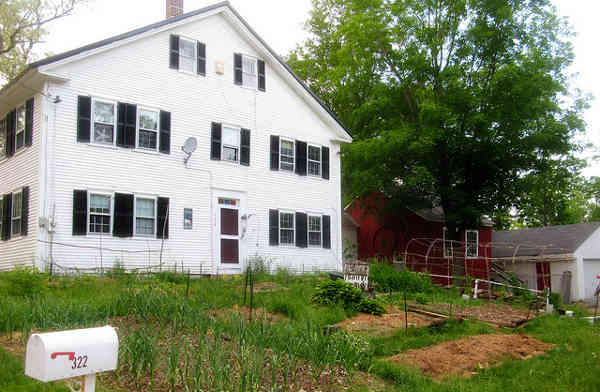This July, artist Fritz Haeg will install his 13th Edible Estate in a suburban neighborhood of Minneapolis, Minnesota this year. Edible Estates brings visible food production to cities, working with families to create productive gardens outside their front doors. These advocacy oriented projects entail ripping out a traditional front lawn and installing a functional vegetable garden. Over the last decade both homeowners and environmentalists have started to question the use of land for lawns. Food writer Michael Pollan explains “Lawns are a symptom of, and a metaphor for, our skewed relationship to the land” in his article “Why Mow?”
According to the Lawn Institute, there are more than 50,000 square miles of cultivated lawn in the United States. Americans spend about US$30 billion dollars on lawn care each year. Lawns can have a large environmental impact through the use pesticides, water, and gasoline for lawn mowers.
But the average garden can produce around half of a pound of food per square foot, according to Roger Doiron of Kitchen Gardeners International, and converting 10 percent of the nation’s lawns to vegetable gardens could provide enough fresh vegetables to meet a one third of our current consumption. According to the U.S. Department of Agriculture (USDA), this is about US$25 worth of produce grown for every dollar spent on seeds and fertilizer. In addition, home gardens can be a way to reconnect eaters to where food comes from and the effort it takes to grow it.
“Gardens, especially urban ones, make visible the intimate relationship between people, cities and food, constantly reminding us of the complexities and poetry of growing food and eating,” says Haeg.















